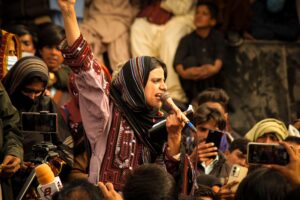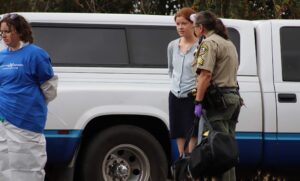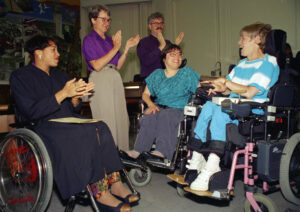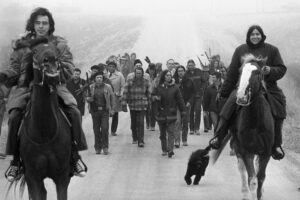Truthdigger of the Week: David Bald Eagle, Lakota Chief and Native American Rights Activist
David Bald Eagle, who died July 22 at 97, was known for an eclectic mix of passions, especially his work in motion pictures. But he also left a legacy of activism for the Native American community, including his service as the first chief of the United Indigenous Nations of the Americas.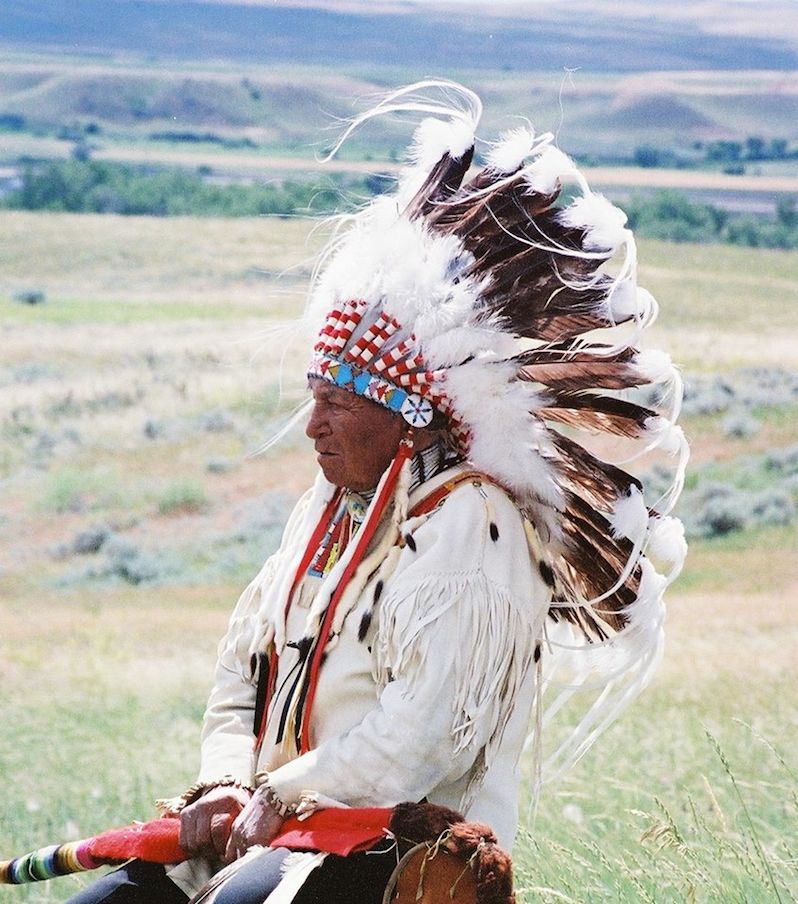 David Bald Eagle grew up on the Cheyenne River Sioux Tribe Reservation in South Dakota. (Richard Bullock / Facebook)
David Bald Eagle grew up on the Cheyenne River Sioux Tribe Reservation in South Dakota. (Richard Bullock / Facebook)
David Bald Eagle grew up on the Cheyenne River Sioux Tribe Reservation in South Dakota. (Richard Bullock / Facebook)
Every week the Truthdig editorial staff selects a Truthdigger of the Week, a group or person worthy of recognition for speaking truth to power, breaking the story or blowing the whistle. It is not a lifetime achievement award. Rather, we’re looking for newsmakers whose actions in a given week are worth celebrating.
Saying that David Bald Eagle did not have an ordinary life is an understatement. In his 97 years on earth, he wore a number of hats: ballroom dancer, musician, rodeo cowboy, stunt double, activist and war hero. On July 22, he died, leaving behind a colorful legacy.
Although many are familiar with Bald Eagle for his acting work, including his role in “Dances with Wolves,” his activism in Native American communities and his connection to his Lakota heritage often were overlooked.
His Lakota name translates as “Wounded in Winter Beautiful Bald Eagle.” Born in 1919, Bald Eagle was raised by his grandfather, Chief White Bull. White Bull fought with Crazy Horse in the battle of Little Big Horn, and Bald Eagle was reportedly “inspired by stories of White Bull’s friend Crazy Horse” and “keen to make his mark.”
Bald Eagle was 5 years old when he was granted U.S. citizenship (although he was born in South Dakota, as an American Indian at that time he was not considered a citizen at birth). He didn’t learn English until age 12. He grew up on the Sioux tribe’s Cheyenne River Reservation in South Dakota, back when the prairies were still vast and open. “When I was a boy, there weren’t even any fences; no electricity lines or phone lines, no roads—nothing,” he once said. “You could head out across the country and you wouldn’t have to open any gates or anything like that. All just open prairie.”
At 17, Bald Eagle joined the U.S. Army’s dwindling remnants of mounted cavalry. During World War II, he re-enlisted and joined the 82nd Airborne Division.
According to the BBC, “[H]e fought in the landings at Anzio in Italy and won the silver star,” and was later severely wounded in Normandy. He went on to become a musician and dancer; after the death of his first wife, he engaged in car races, rodeos and stunt-double work. He eventually remarried and went on to raise numerous children, including adopted children. He is survived by scores of grandchildren and great-grandchildren.
Throughout his eclectic career, which led him to Hollywood, Bald Eagle tried to educate others about his Lakota heritage. Sonny Skyhawk, an actor and member of the Sicangu Lakota Nation, explained Bald Eagle’s passion to NPR:
Bald Eagle always tried to teach people about Native American history and life, whatever was happening around him, Skyhawk says.
“He excelled at being an educator, and did whatever it took, whatever his own power and talents, to bring that to the forefront,” Skyhawk says. …
Chief Bald Eagle had extraordinary exploits and adventures, but Skyhawk says his greatest attribute was something quieter: his “silent compassion.”
Skyhawk explains that many of the roles offered to Native American actors or stunt workers presented indigenous people in a bad light. But as Richard Bullock notes in an obituary on Facebook, Bald Eagle “somehow seemed to embody what was great about the culture of the American West, as well as his own Lakota spirit.”
Bald Eagle’s final film was “Neither Wolf Nor Dog.” The movie’s director, Steven Lewis Simpson, said that Bald Eagle thought it “was the first film he had been in that ‘told the truth’ about his people.”
Throughout his life, Bald Eagle took on more active roles in promoting Native American rights and ideals. He became the chief of the Minneconjou Lakota Oyate in the late 1990s, and in 2001 was appointed the first chief of the United Indigenous Nations of the Americas:
That role took Bald Eagle across the United States, but it wasn’t an easy responsibility for him to shoulder. It took him four days to decide whether to accept the position. He recounted what it was like to finally accept the post and address an audience of 900 representatives of indigenous American people:
I got up and said every one of you people of the Americas’ indigenous nations have had a way of life, your own language and beliefs, for the past thousands of years. … I don’t want you to change. I want you to keep your language and practices and ceremonies you have always done. Don’t change anything. Just go on. They gave me a standing ovation.
“Chiefs are chosen by acclamation, but they have to meet certain criteria: being humble, being brave and other values we embrace as a people,” Skyhawk said. “Dave Bald Eagle qualified in all those values. We don’t have many chiefs left because most of them have made the journey to the spirit world, but Dave carried the name of chief very well.”
Bald Eagle’s passion for preserving indigenous community traditions continued as he entered his 90s. At 94, he narrated a letter to Congress in which he condemned horse slaughterhouses, calling them “a slap in the face” to the Lakota way of life. “The horse has and always will be a sacred animal to the Traditional Lakota people,” the letter states. “We cannot abuse him or kill him for human consumption.” It continues:
In these times we need the Native American people to wake up. It is easy to be misled by money, greed and false power. The Native American people are easily influenced as they have strayed from our traditional values and Way of Life.
If the Native American people allow the horse slaughterhouses on Indian lands, it opens the door for Government and other special interest groups to control our lands and our way of life.
For many years, Bald Eagle also served as the face for Mount Rushmore’s state tourism ads, and even landed on the cover of the Australian edition of National Geographic Traveller in 2015.
In 2003, Bald Eagle explained the importance of Lakota traditions to the Rapid City Journal of South Dakota:
Ever since I have been a chief, I have wanted to tell people the truth and that’s what I’ve been doing—bringing the truth out. …
I know we can’t go back there, back to where we were. But we can tell the young ones how it was and they can remember, and they can bring it back. They can return.
In April, Bald Eagle was admitted to the Rapid City Regional Hospital with double pneumonia. Dozens of family members visited him, filling the halls of the hospital with laughter and singing.
Indian Country Today Media Network reported on his final days:
All the family members in the Chief’s tiyospaye [the basic unit of Dakota and Lakota society] were given time alone at his bedside. Finally, as the passage drew very near, his sons and daughters were called and given instructions to carry out in preparation. This included, at a chosen spot in a little cottonwood draw near the family ranch house, four days on a scaffold, after the manner of his ancestors, and then burial at the Sturgis National Cemetery.
A week before he died, told of the hospital’s plans to remove him to hospice care, the old chief’s family brought him home. Last Friday, July 22, surrounded by family, in the early evening a son-in-law took his drum and played a love song of parting and farewell. When the song was completed, Waniyetu Opi [Bald Eagle] had died in the arms of his wife [Josee Beautiful Bald Eagle].
“Dave encountered many forms of prejudice and discrimination,” Bullock writes, but “he never showed bitterness, and met adversity with invincible courage and humour.” Many expressions of grief and love have been posted on Bald Eagle’s Facebook page.
“Dave represents one of the very last of a generation of amazing elders, who were the last to be brought up by those born free within their culture,” Lewis Simpson notes. “We mourn the passing of an era also.”
During his long life, Bald Eagle saw seismic shifts in the broader landscape. “I’ve had a rough life. But I can remember everything. From horse and cart days right up until today; jet planes and computers,” Bald Eagle told Bullock. “The world has changed so quickly in just one lifetime. It’s so short a time. I’ve had a long life but it just seems like yesterday.”
For his decades of contributions to Native American communities throughout the United States and his commitment to sharing his culture and love of adventure, Chief David Bald Eagle is our Truthdigger of the Week.
Your support matters…Independent journalism is under threat and overshadowed by heavily funded mainstream media.
You can help level the playing field. Become a member.
Your tax-deductible contribution keeps us digging beneath the headlines to give you thought-provoking, investigative reporting and analysis that unearths what's really happening- without compromise.
Give today to support our courageous, independent journalists.
